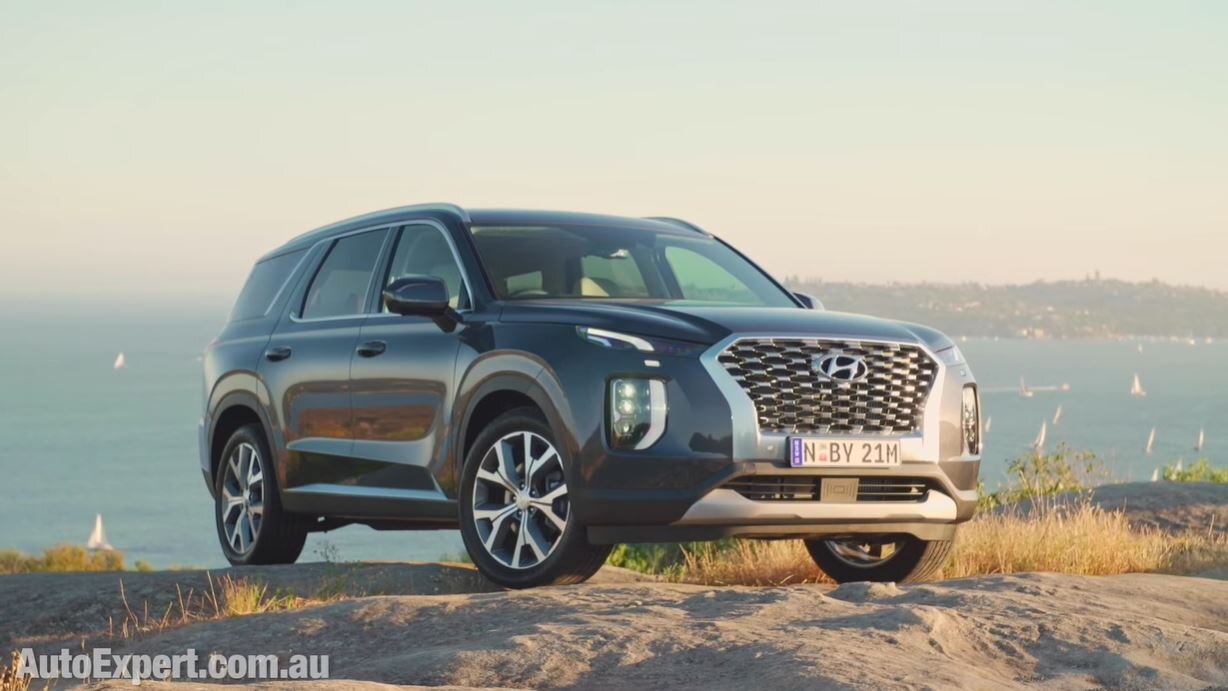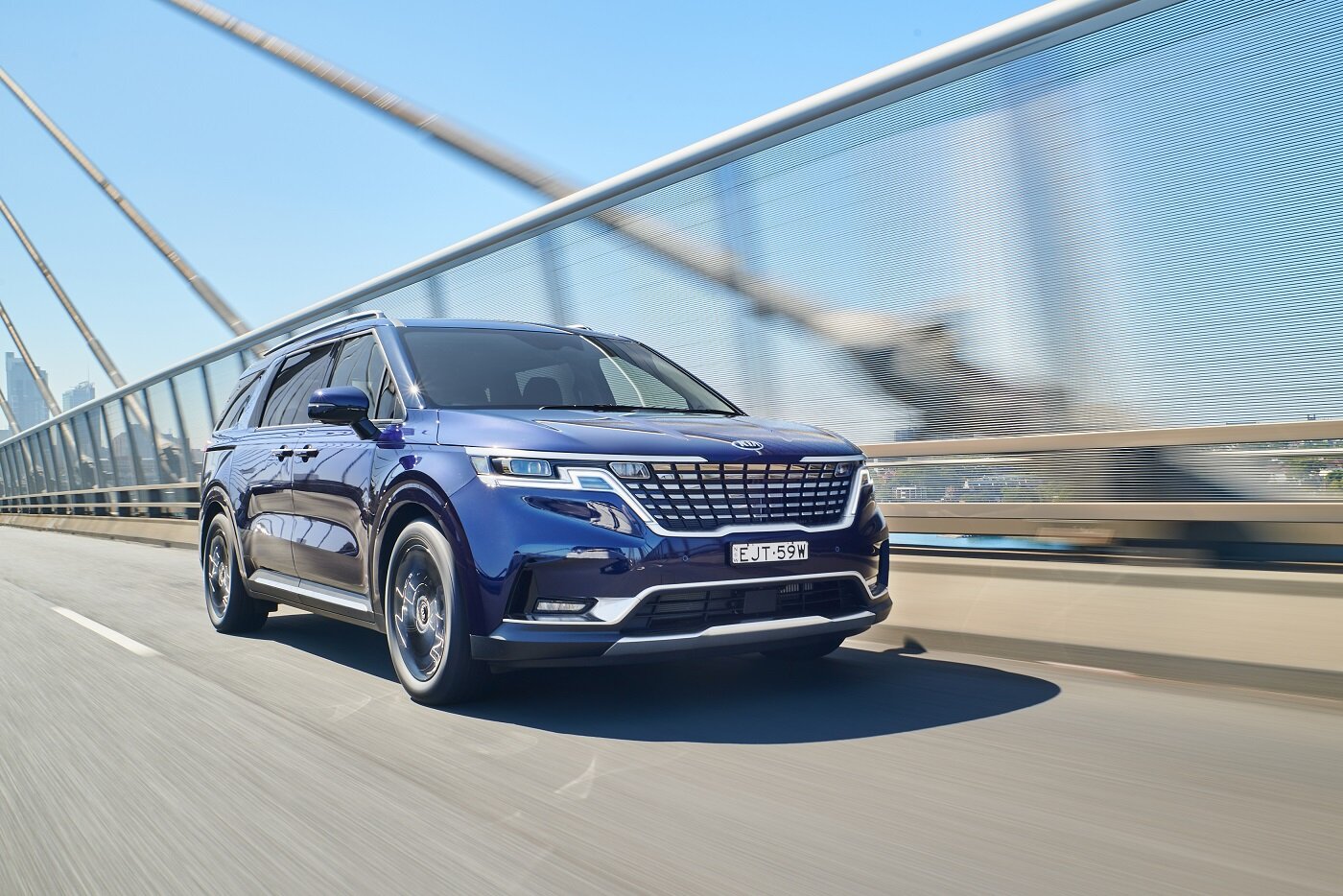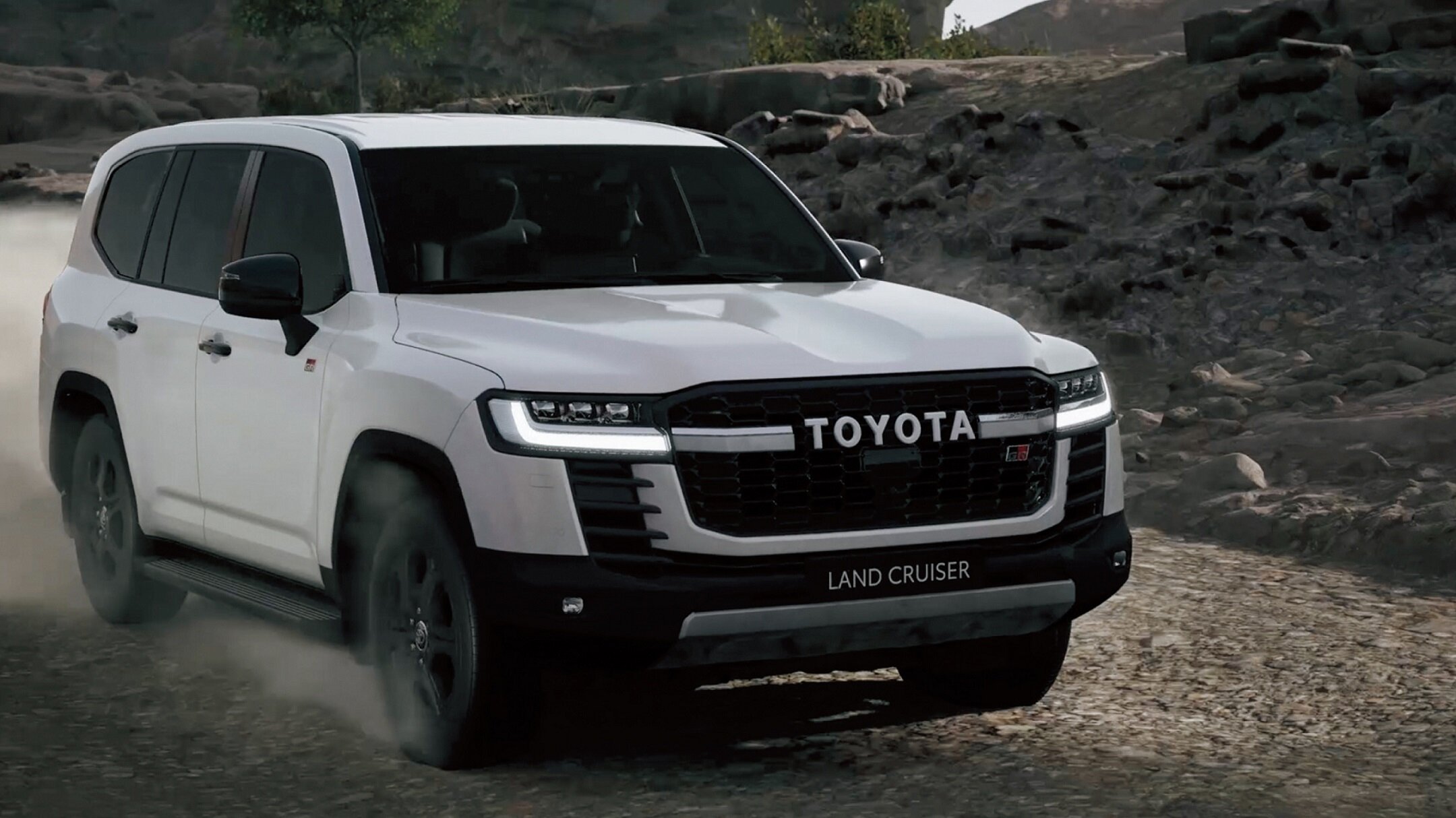Everything wrong with the new Toyota LandCruiser 300
Toyota has had 14 long years to get the new 300 Series LandCruiser right. But once again, they're still the king of automotive mediocrity. And the media just laps it up…
The incoming Toyota LandCruiser 300 Series isn’t everything it’s being celebrated as, before having even being launched in Australia.
Toyota Australia has confirmed several details about their new 4WD, so let’s decipher what we know and what it will mean for you as a consumer.
Here’s why the Toyota LandCruiser 300 hot vee could be a lemon >>
And here’s Why the media is so wrong about the LC300 >>
The big ticket item in new LandCruiser is the 3.3-litre twin-turbo V6 diesel engine which will offer peak power of 227kW (a 13.5 per cent increase).
It’s being suggested this is “V8-beating performance”, but a turbocharged 1.6-litre four-cylinder from the Hyundai i30 N-Line makes 150kW, which is 66 per cent of the big Toyota’s output. Also, a Hyundai Palisade’s 2.2 diesel, with roughly the same proportions and seven seats, makes 147kW of peak power and has a power-to-weight ratio of 75.5 kW per tonne (Highlander) - thanks to weighing over half a tonne less at just 1983kg with a full tank of fuel.
Toyota’s V6 diesel needed two turbos; 700Nm is impressive. Viscous coupling fan - not so much.
Given that we don’t know the official weight of the LC300 yet, but it’s claimed to be lighter than the outgoing 200 Series Sahara, which weighed 2.74 tonnes (Sahara), for a power-to-weight ratio of 74.9 kW per tonne.
4X4 Australia suggests (not officially stated by Toyota Australia) the LC300 will have a:
kerb weight reduction across the range of more than 100kg.
-4X4 Australia
This would put the new LandCruiser at about 2640kg - that’s 56kw per tonne. It’s hard to see how the LandCruiser will become any kind of benchmark, performance wise. You’re better off with Palisade or even a Kia Carnival (71 kW per tonne), over a LandCruiser.
The transmission will be a new 10-speed epicyclic automatic, which is a pretty safe bet to hunt for gears incessantly in a wide powerband as you tow that big, heavy boat uphill, for hours. When you’ve got 700NM across a 4000 RPM rev-range, more gears certainly don’t help.
There are also celebrations afoot that the LC300 will perform with:
noticeably lower fuel consumption and emissions
-Toyota Australia press release
The Hyundai Palisade’s 2.2 diesel in Highlander has a combined CO2 output of 193 grams per kilometre, and the outgoing LandCruiser 200 Sahara has an output of 250 grams per kilometre. You can expect the LC300 to be somewhere in the middle.
LandCruiser 300 is still gunna churn out the fumes; it’s a heavy girl with a slightly smaller engine.
On fuel consumption, according to CarsGuide:
Toyota says the new model will shave around 10 per cent off that number, meaning fuel use of around 8.5L/100km
Palisade gets 7.3 litres per 100km (combined), Carnival gets 6.5.
Apparently, in order to “improve the car’s dynamics” the V6 engine sits “28mm lower” and “70mm further back”. Except that 2.8cm of height reduction and mounting it 7cm rearward isn’t gunna do much for reducing its centre of gravity. Any improvement in its dynamics will be slight and barely noticeable by the average punter.
High Speed Active Cruise Control is also new to LandCruiser 300, or even just LandCruiser in general, because it wasn’t available on even a $100,000 mid-spec 200 Series - you had to pay the full $130K for the Sahara. Whoop-di-doo. Again, a $27K Kia Cerato has adaptive cruise.
LandCruiser 300 uses what Toyota calls a “new TNGA-F platform” which they debuted six years ago, and bolts its entire “off-road core” to a body-on-frame structure. This is why it won’t be comfortable as the equally large SUVs like Hyundai Palisade, and Kia Carnival, which have minimal body roll - because they’re designed that way (as well as being substantially lighter).
A permanent all-wheel drive drivetrain with two-speed transfer case all all but confirmed.
Towing will of course remain perfectly status quo, because Toyota also says the:
Towing capacity is maintained at 3.5 tonnes.
-Toyota Press Release
Well, of course it will remain at 3.5 tonnes because A) they’re not gonna go backwards on towing capacity and risk appealing to caravan/boat owners that it’s perfectly safe to tow a 6.1 tonne combination on an ordinary car licence; and B) they’re limited by licencing requirements and Australian Design Rules.
I would advise not to tow anything heavier than three tonnes in a 2.6-tonne Land Cruiser 300, especially when said trailer will be a rigid drawbar pig trailer. Boats are especially unstable at the rear with big heavy engines hanging right out the back, begging for a pendulum effect if you go too fast or have to swerve suddenly.
REPORTS FOR BUYING PAJERO SPORT, NISSAN PATROL OR LANDCRUISER
Should I buy a dual-cab ute or wagon for first-time off-roading? >>
Toyota LandCruiser Troopy fuel consumption (why it's so bad) >>
Nissan Patrol Y62 (Armada) VS Toyota LandCruiser >>
Why you should never tune your diesel engine >>
Should I buy the new LandCruiser 300 Series or Isuzu D-Max for heavy towing? >>
Are GVM upgrades a good idea? >>
Is the Nissan Patrol a good vehicle for towing and touring? >>
My AutoExpert AFFORDABLE ROADSIDE ASSISTANCE PACKAGE
If you’re sick of paying through the neck for roadside assistance I’ve teamed up with 24/7 to offer AutoExpert readers nationwide roadside assistance from just $69 annually, plus there’s NO JOINING FEE
Full details here >>
Taking LandCruiser 300 off-road
Despite the endless drip-feeding of media articles hyping up the new LandCruiser, it’s not exactly going to re-invent the four-wheel drive. After all, Toyota Australia itself says:
In keeping with LandCruiser's off-road heritage, vehicle dimensions including length, width, wheelbase and departure and approach angles are very close to the outgoing model, depending on the variant.
This means the outgoing 200 Series, which is 1cm short of five metres (4.99m), 2cm narrower than two metres (1.98m), 6cm shorter than two metres high (1.94m), with a wheelbase (and therefore cabin space) of 2.85 metres, still makes for a reasonable comparison.
A Kia Carnival has a three metres wheelbase, the Palisade, Santa Fe, Kia Sorento and Mazda CX-9 all have 2.9 metres and a CX-5 and Hyundai Tucson get 2.7 metres. Congratulations, big tough new LandCruiser will have a few more centimetres of wheelbase than a mid-size SUV - but can’t beat a people mover.
And as for those hardcore off-road design credentials, the 200 Series has 230mm of ground clearance (1cm more than a Subaru Forester) and 700mm of wading depth - both figures which will be the same on the so-called ‘new’ LandCruiser. Ground clearance is of course not important for the suburban school run, generally. Or any flat road.
a new Multi-Terrain Monitor … instantly displays obstacles as viewed from the driver's viewpoint
Essentially, they’ve done what Land Rover did which was to display on a screen what the driver should have already seen with his/her own eyes, via a correctly adjusted seat and a clean windscreen.
New LC300 will get an electronic device which will “effectively” disable the front and rear stabiliser bars.
Pro Tip: When off-roading, you should be trying your best to avoid obstacles, not watch as your wheels drive over them. If you can’t avoid them, you want to be watching where you’re going, not a screen.
If you can’t look at the terrain in front of you, and remember it one second before your tyres drive over said terrain, you might need an MRI.
LC300 will get safety features like auto emergency braking, which is, of course, standard on $30,000 hatchbacks - just like radar guided cruise control, that feature only available on the 200 Series Sahara costing $130,000. Let’s wait and see if Toyota will be able to offer all the now-standard crash-avoidance features currently available on just about all new cars today.
New LandCruiser will get the:
latest Toyota Safety Sense active safety package … [which] incorporates a pre-collision system that helps avoid a collision or reduce damage by detecting pedestrians (daytime and night-time) and cyclists (daytime)
Such safety systems have been around for several years now, and are widely available on many more affordable models than a LandCruiser.
What is good, is the emergency steering and crash-avoidance feature, which uses steering inputs derived from the lane-keeping system to tug at the wheel to help the driver perform an emergency collision avoidance steering manoeuvre. That’s good. What we don’t know is whether this will be made standard - unlikely - or if it’ll be part of the higher priced variants of LC300.
The same intersection collision avoidance feature will “detect oncoming vehicles at intersections and pedestrians crossing the street”. Given Toyota’s track record for wait for other carmakers to do things first, it’s ‘wait and see’ situation for how accessible this tech will be to the customer.
LANDCRUISER: THE CARRY OVER CHAMPION
While you can expect aftermarket companies like ARB, Old Man Emu and Pedders will all be gagging to give you a GVM upgrade on your new LandCruiser 300 and undo all the R&D Toyota does, don’t buy into it.
Independent front suspension, solid rear axle, the coil springs - on the rear, will all return.
You also get a CD player. Perhaps you can show your kids how cutting edge CDs are, dusting off all 40 of them from their nylon wallet in a random box in the garage.
Then there’s the competition - the Nissan Patrol. Costing $40,000 less, tell me what the LandCruiser can do that the Patrol cannot.
The LandCruiser 300 Series will be a tiny step, in the wrong direction, and not in a Neil Armstrong way, and nobody is gagging for an enormous heavy thirsty vehicle like this today.
Not enough and well overdue, manifestly inefficient and expired before it even launches, this will probably means it will sell like crazy in Australia.
As a nation of car buyers, we usually don’t pass this kind of intelligence test.












